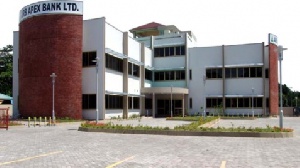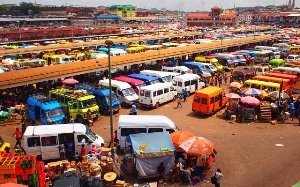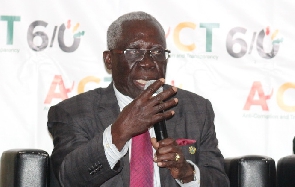Rural banks total assets for the first quarter of the year 2014 were said to be GH?1,.9 billion. According to records from the central bank, this figure accounts for 3.86% of total assets for the banking industry, compared with 4.71% for 2013, and shows a paltry decline of 0.85%.
Out of the rural banking total assets of GH?1.9 billion, 26 rural banks out of the rural banking population of 139 rural and community banks in the country accounted for 50.9%.
As of March 2014, deposits and credits of RCBs had hit GH?1.9 billion and GH?716 million -- recording a year on year growth of 13.95% and 12.66% respectively.
However, the top 26 RCBs controlled 52.5% and 50.8% of the total deposits and credit, which poses a concentration risk.
This, according to experts, requires a conscientious effort and contribution of all the relevant stakeholders, directors, shareholders and management of RCBs to do more to reduce such concentration.
The Bank of Ghana recently came up with an upward review of the share capital required by all rural and community banks from GH¢150,000 to GH¢300,000 as part of efforts to improve the banking industry and environment. It is in line with this that the central bank has challenged RCBs to strive toward a higher level, as banks with greater capital have the ability to withstand shocks.
Rural banks in the country experienced poor financial performance during the early 1980s. This can be attributed mainly to the drought the country faced, especially in 1983.
Also, poor governance coupled with inefficient management can be cited as being among the causes of rural banks’ poor performance in the 1980s.
To address the problems confronting rural banks in the country, some reforms were introduced as a means to curb the deteriorating situation. These were limiting exposure to the agricultural sector, which was considered to be highly risky; strengthening the Bank of Ghana’s supervisory role; and liquidation of distressed rural banks.
Other reforms were training programmes which were instituted for staff, management and directors of the rural banks, as well as establishment of the ARB Apex Bank in 2002 to provide banking and non-banking support services.
These reforms have led to greatly improved financial performance of rural banks over the past ten (10) years. The significant growth of rural bank outreach from 2009-2013 in terms of growth of deposits and advances is an indication of the acceptance by rural folk of the rural banking concept.
This also implies that the rural banks have been able to justify their establishment objectives, which are to address credit needs and also provide a safe haven for deposits by the rural populace. Average growth of RCBs in terms of total assets for the period was 32%. The average growth of other key indicators is as follows:
Deposits - 32%, Advances - 28%, Short term Investments - 42%, Paid-up Capital - 27%, Profit Before Tax - 38%.
The trends indicate that rural banks have performed admirably even in the face of stiff competition, which shows that rural-dwellers have gained increased confidence in rural banks.













